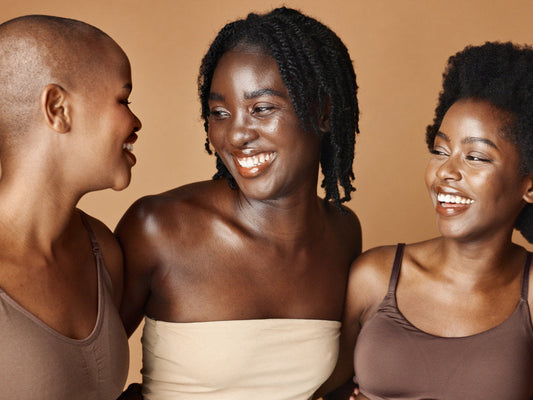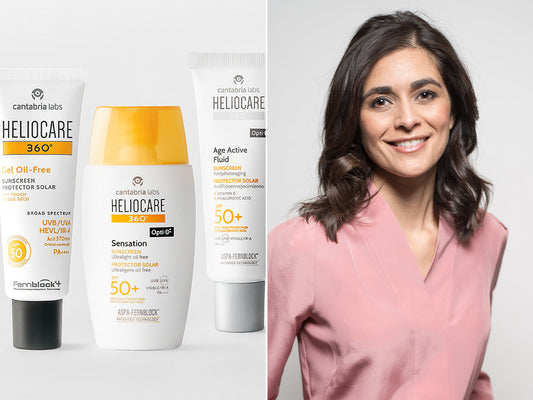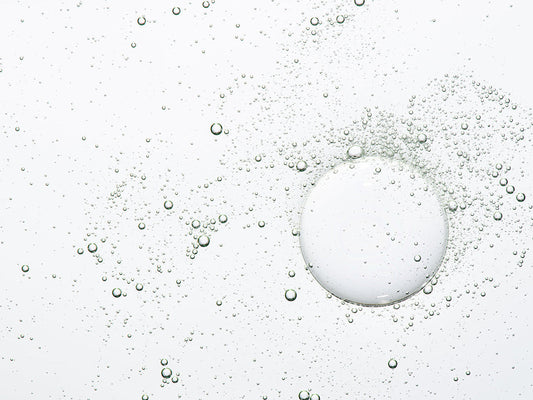Melanoma and non-melanoma skin cancer – what's the difference?
Published on 01 May 2024
There are two main types of skin cancer; melanoma and non-melanoma. In this blog we’ll explore the differences between the two, what to look out for and how to prevent them.
Non-melanoma skin cancer
There are different types of non-melanoma skin cancer depending on the skin cell that is the source of the abnormality:
- Basal cell skin cancer / basal cell carcinoma (BCC)
- Squamous cell skin cancer / squamous cell carcinoma (SCC)
- Some other rare types
Basal cell carcinoma is the most common type of skin cancer. In general, non-melanoma skin cancers tend to develop in areas that get regular exposure to the sun.
What are the signs?
The symptoms of non-melanoma skin cancer are broad and varied, but things to look out for are a sore or area of skin that:
- Doesn't heal within 4 weeks
- Looks unusual
- Hurts, is itchy, bleeds, crusts or scabs for more than 4 weeks
What is melanoma skin cancer?
Melanoma skin cancer starts in a cell called the melanocyte, which produces pigment in our skin. It happens when abnormal cells start to grow and divide in an abnormal way and can spread to other areas of the body.
What are the signs?
There are several signs that you can look out for when it comes to melanoma skin cancer such as:
- A new abnormal mole
- A mole that seems to be growing or changing
- Change to a previously normal patch of skin
The ABCDE of melanoma is a really helpful guide to help you identify any signs of melanoma:
- Asymmetry – non-uniform with one half of the patch / spot looking different to the other
- Border – irregular or undefined border
- Colour – more than one colour or shade such as shades of tan, brown, black, red, white or blue
- Diameter – melanoma growths are usually larger than 6mm in diameter, (about the diameter of a standard pencil)
- Evolution – changing size, shape, texture or colour over time
What are the risks and causes of melanoma and non-melanoma skin cancer?
The majority of skin cancers are caused by UV radiation, so taking steps to protect your skin against the sun on a daily basis is essential.
There are several factors that can contribute to your risk of melanoma skin cancer which are outlined below:
Age: Your risk of melanoma increases with age, with the majority of cases occurring in people aged 75 upwards. The increase of sunny holidays and use of sunbeds has, however, caused a rise in younger people being diagnosed.
UV light exposure: As the main cause of melanoma, high levels of unprotected UV exposure increase your risk of melanoma. UV is also emitted from sunbeds, and the use of these greatly increases your risk factor.
Skin colour and freckling: Those with fair skin, red hair and blue eyes are more at risk as well as anyone who burns easily in the sun, and those with freckled skin.
Those with darker skin have more natural protection against UV so their risk is lower, however while it’s less common, the same steps should be taken to protect and check the skin.
Moles: Those with more moles are at a higher risk of melanoma and should take more care in the sun, and make sure they take the time to regularly check their moles.
Genetics and family history: If a relative has been diagnosed with skin cancer under the age of 30, or if you have more than one close relative that has been diagnosed, statistically you are at a higher risk. This may also be linked to you sharing similar ‘high-risk skin characteristics’ as your family members.
Medical concerns: Some diseases and medication that cause a weakened immune system can also play a part in your risk of skin cancer.
Treatment
Treatment varies hugely depending on the location, type and stage of the skin cancer as well as your age and overall health. Treatment options include surgery, radiotherapy, topical chemotherapy, photodynamic therapy and targeted drugs.
If you are concerned about any changes to your skin, including new and existing moles, get in touch with a healthcare professional or dermatologist as soon as possible to either put your mind at rest, or identify the appropriate course of treatment.
Prevention is better than cure
There are simple steps that you can take when you’re spending time outdoors to help minimise your risk of developing skin cancer, such as:
- Wearing a broad brimmed hat that shades your face and neck
- Wearing long sleeves and trousers
- Wearing sunglasses with 100% UV protection
- Seeking shade when the sun is strongest (between 11am and 3pm)
- Never use sunbeds
- Use a high-level (at least SPF30) broad-spectrum sun protection every day, regardless of the weather
Heliocare 360° - your daily sun protection strategy
UVB rays are the main cause of skin burning which causes damage to our skin cells DNA which can develop into skin cancer. UVB is mainly present in summer months, but the sun causes damage to skin every day, all year round as UVA, visible light and infrared-A (all emitted from the sun) are always present. These types of solar radiation contribute towards oxidative stress which damages our skin’s health leaving it vulnerable and more suspectable to damage. UVA and visible light are also the leading cause of premature skin ageing and pigmentation.
Recommended by skin professionals and dermatologists, Heliocare 360° is a dermatological daily sun protection range of topical formulations and skin health supplements created by Cantabria Labs – a reputable worldwide dermatology company renowned for innovation and research.

Its topical products provide full-spectrum protection against UVA, UVB, visible light and infrared-A, and it’s also the only sun protection range that protects skin beyond sunscreen with exclusive, clinically proven Fernblock® antioxidant technology, to help prevent and repair damage to skin health caused by daylight and boost skin health.
The Heliocare 360° range contains products suitable for all skin types, with various coverage levels and finishes, as well as unique formulations designed to help prevent and reduce the signs and symptoms of key skin concerns, so you can be confident there’s a product for you that you’ll love to use everyday.
Boost your protection with Heliocare 360° supplements
The Heliocare 360° skin supplements help to boost your free radical defence from within, improving your skin’s overall health and giving it better capacity to protect itself.

Containing high levels of Fernblock® and additional skin-boosting ingredients, the Heliocare 360° supplement range helps to boost your skin’s daily defences against free radical damage caused by daylight (UVA, UVB, visible light, infrared-A) and other environmental stressors.
Fernblock® is a supercharged antioxidant with a unique natural blend of polyphenols whose skin health protecting, repairing and boosting properties have been demonstrated in both topical and oral forms and supported in over 80 scientific publications:
- Protects skin against damage caused by daylight; UVA, UVB, Visible Light, Infrared-A1,2,3
- Prevents collagen breakdown2
- Protects and repairs skin cell DNA4
- Prevents light-induced pigmentation5
- Protects the skin’s immune system5
- Improves the efficacy of SPF filters by up to 14%6
Designed to be used alongside your topical Heliocare products, the oral supplements are the perfect addition to your sun protection regime if you’re spending more time outside or are at high risk of developing skin cancer as discussed above.
Find your perfect Heliocare 360° daily sunscreen
Explore the Heliocare 360° range now.
If you have any questions please get in touch and we’d be happy to help.



